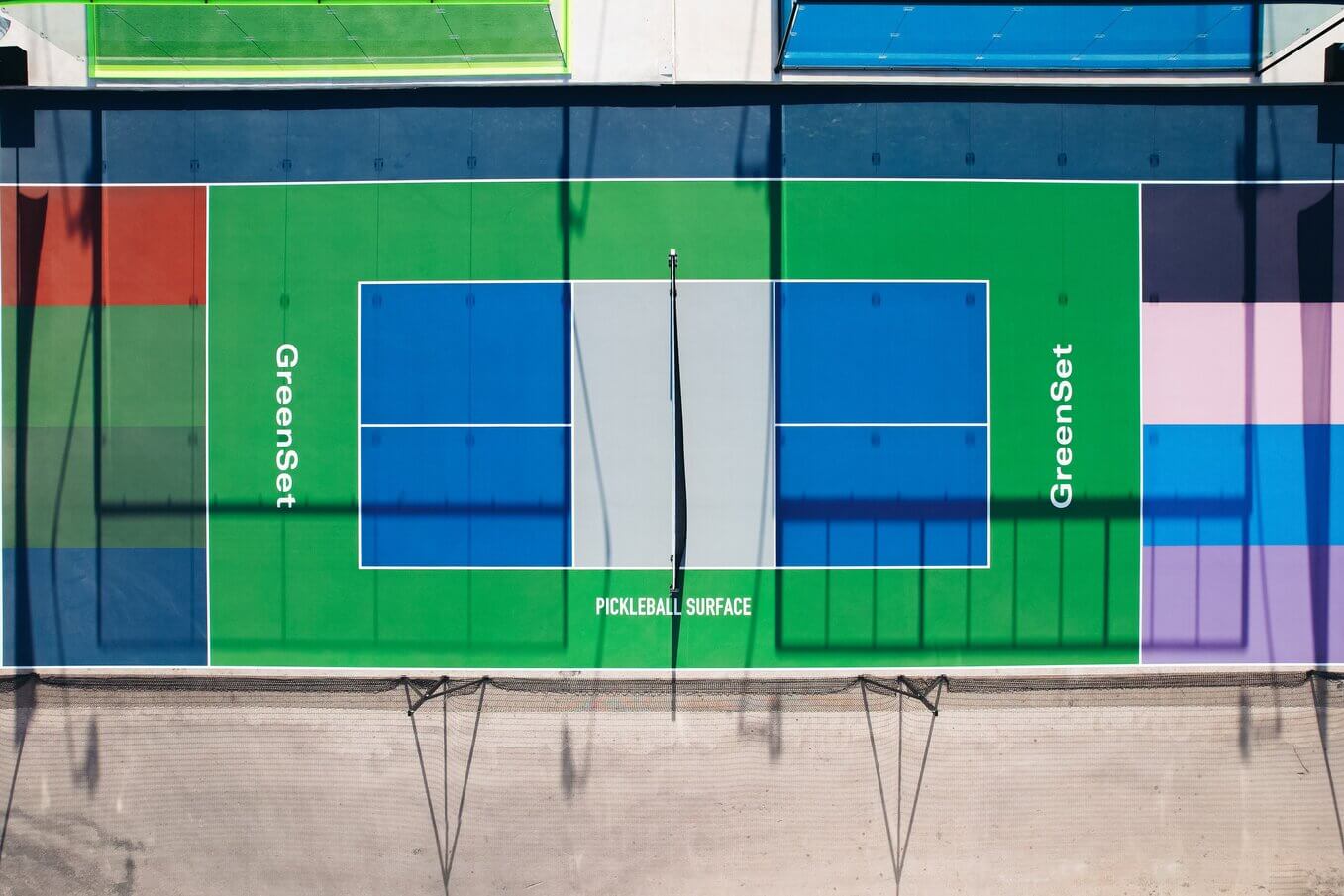Economical Pickleball Court Construction for Homes and Communities
Economical Pickleball Court Construction for Homes and Communities
Blog Article
Sustainable Practices in Pickleball Court Building And Construction You Must Know
As the appeal of pickleball proceeds to climb, so too does the demand for sustainable practices in court construction. The influence of these techniques prolongs much past the court itself.
Choosing Eco-Friendly Materials
Choosing eco-friendly products is a critical step in the construction of sustainable pickleball courts. The selection of lasting materials not just decreases ecological impact but also enhances the longevity and performance of the court. Trick products include recycled rubber for the surface area, which supplies superb resilience and shock absorption while diverting waste from land fills.
Additionally, making use of in your area sourced products decreases transport discharges and supports regional economic situations. Pickleball court construction. Making use of native woods for fencing and seats can give a sustainable visual while ensuring durability versus the elements.
Including permeable materials for court structures can further add to sustainability by allowing for all-natural water drainage and minimizing overflow. These selections not just secure local communities yet likewise promote healthier play atmospheres.
Effective Water Drainage Solutions
While the option of green products is essential, carrying out reliable water drainage solutions is equally critical for preserving lasting pickleball courts. Proper drainage not only protects the court surface area from water damages yet also lessens disintegration and overflow, advertising ecological honesty.
Efficient drainage systems can include absorptive paving, which permits water to penetrate the ground as opposed to merging on the surface area. This minimizes the probability of standing water, which can cause mold and mildew and other upkeep concerns. Furthermore, incorporating strategically placed water drainage channels and swales can direct excess water far from the court area, ensuring a completely dry playing surface area and avoiding soil disintegration.
Utilizing indigenous plants in the landscaping around the courts can better improve drainage by soaking up excess water and decreasing drainage. These plants require much less watering and promote biodiversity, lining up with sustainable techniques.
Additionally, it is essential to on a regular basis preserve the drain system to guarantee its long-lasting efficiency. This consists of clearing up particles and monitoring for blockages. By prioritizing efficient drain remedies, pickleball court producers can significantly add to the sustainability and durability of the facility, eventually profiting both gamers and the setting.
Energy-Efficient Lights Options
As the demand for pickleball continues to grow, incorporating energy-efficient lights options into court design has actually come to be increasingly vital for sustainability. Typical lights systems usually take in extreme energy, adding to higher operational prices and ecological influence. As a result, adopting modern-day, energy-efficient innovations is vital for both new constructions and renovations.
LED (Light Emitting Diode) illumination stands apart as a leading selection as a result of its longevity and power savings (Pickleball court construction). Compared to conventional lighting, LEDs make use of approximately 75% much less power and can last up to 25 times much longer, considerably decreasing maintenance expenses. Additionally, the directional nature of LED lights minimizes light pollution, making certain that lighting is focused on the court as opposed to surrounding locations.

Lasting Surface Alternatives
Exploring sustainable surface alternatives for pickleball courts has actually gotten grip among players and building contractors alike. The focus on eco-friendly products not only aligns with the expanding environmental recognition however additionally enhances the more helpful hints efficiency and toughness of the courts.
This product offers exceptional shock absorption, minimizing the risk of injuries for players while promoting sustainability. These tiles are simple to change and mount, and their versatility permits for different court arrangements.
Natural turf courts are likewise becoming a sustainable option, promoting biodiversity and decreasing the heat island effect. Nonetheless, they require regular upkeep and water, which may not align with all sustainability objectives.

Water Preservation Strategies

An additional effective method involves the setup of rain harvesting systems. These systems gather and store rainwater for use in preserving court surfaces and landscaping. This method not just preserves potable water however additionally reduces reliance on local sources.
Furthermore, using drought-resistant landscape design around the courts is important. Native plants call for much less water and are much better adjusted to local climate problems, hence lowering total water consumption. Additionally, utilizing effective irrigation systems, such as drip irrigation, guarantees that water is provided straight to plant roots, lessening dissipation and waste.
Final Thought
Integrating lasting methods in pickleball court building and construction dramatically adds to ecological preservation and source effectiveness. Using environment-friendly materials, executing effective water drainage remedies, and taking on energy-efficient lighting options can substantially lower eco-friendly effect. Discovering sustainable surface area options and employing water preservation methods boost the general sustainability of these entertainment facilities. By focusing on these methods, the building and construction of pickleball courts can line up with broader ecological objectives while advertising longevity and performance within communities.
As More Bonuses the popularity of pickleball continues to increase, so as well does the demand for sustainable practices in court building.Choosing environmentally friendly materials is a vital action in the building and construction of lasting pickleball courts. By focusing on energy-efficient lighting options, pickleball court contractors can contribute to a more sustainable future while meeting the needs of players and stakeholders alike.Including lasting surface area choices not just enhances the efficiency of pickleball courts yet likewise paves the way for executing effective water preservation strategies.Integrating sustainable techniques in pickleball court building and construction significantly contributes to ecological preservation and resource effectiveness.
Report this page